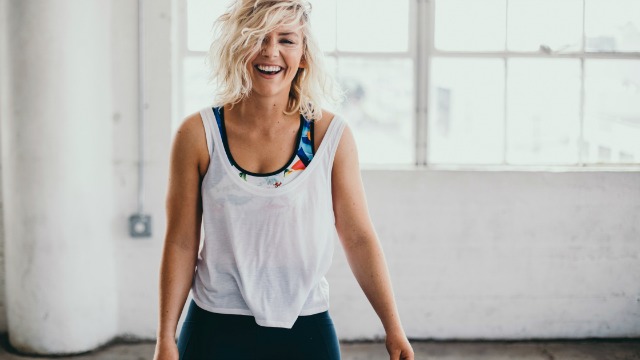Faster recovery is intoxicating to runners because it means we can then train harder (and get faster!). But how can we boost our recovery abilities?

Last year, I became fascinated (though not entirely surprised by) a study that claimed children recover like elite endurance athletes.
Their muscles resist fatigue from high-intensity exercise and their post-exercise rate of recovery is through the roof. Their heart rate recovers faster than trained adults and they’re better at removing lactate from the blood.
Incredible! Maybe that’s why my kids can play on the obstacle courses I build for hours…
But how can us grown-ups get these benefits?
In short, we can’t. We don’t have the hormonal profile of an 11-year old nor can we decide how much of our aerobic metabolism to use while running (though that metric can be improved!).
But we can optimize our recovery and training to maximize both and minimize the risk of injury. That winning combination will help us achieve our potential.
To help make sense of the complicated art of recovery and caring for our bodies, I spoke with Alexandra Ellis for the 100th episode of the Strength Running Podcast.
To celebrate our 100th episode, I invite you to take a short (3-question) survey to help us make it better. I really appreciate it.
Alex Ellis: The Body Geek

Alex is a polymath, having studied and worked in many different areas of exercise science, fitness, and coaching.
She has a degree in Exercise Biology and has amassed nearly 1,000 hours of yoga training. Alex also has additional education in:
- Human Dissection (of course, this was the first thing we talked about)
- CrossFit Mobility
- Movement education with Sarah Court, DPT
- Regeneration Techniques workshop completion through NSCA
As you can see, she has experiences that most coaches would envy (human dissection and NSCA training in particular).
And I’m always looking for new perspectives that will help us improve our running. Alex delivers in a fun episode that highlights her knowledge about the body, movement, recovery, and injuries.
In this conversation, we discuss:
- What did she learn from dissecting human cadavers?
- The physiological, biomechanical, and behavioral aspects of her Exercise Biology degree
- What she learned from CrossFit Mobility that will help runners
- How to incorporate a daily mobility practice into your life
- The pros and cons of different massage tools (foam rollers, lacrosse balls, and even Graston tools)
- How to prevent and treat rolled ankles
- What she means when she says, “If stretching ain’t helping, start building strength.”
Subscribe to the Strength Running Podcast in iTunes, Spotify, or Stitcher.
Show Notes & Resources
- Alex Ellis’ website
- Follow Alex on Instagram
- How to heal an ankle sprain
- Rolled ankles prevention & treatment (video)
- Simple but effective foam roller
- SR’s foam roller cheat sheet
Thank you Alex for coming on the Strength Running Podcast and sharing your wisdom!
After discussing recovery, body care, and ensuring your muscles and connective tissues are “supple” enough to work hard, I want to encourage you to start a daily mobility practice.
A dynamic warm-up completed before your run and some light foam rolling is a great place to start.
Download our free Cheat Sheet to foam rolling for runners, featuring a photo guide for:
- Optimal rolling positions
- Common mistakes you don’t want to make
- Best practices for self-massage
- When you should use a foam roller
Get it here and hang it up where you foam roll, refer to it whenever necessary, or make fun paper airplanes.
And hopefully, it will encourage you to foam roll more regularly to enhance your recovery!